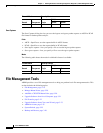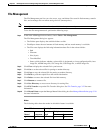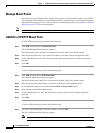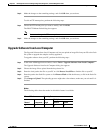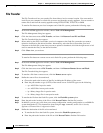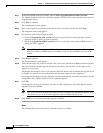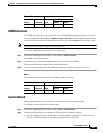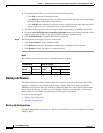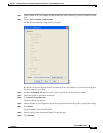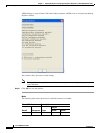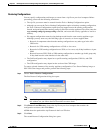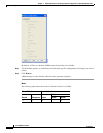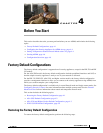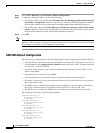
3-26
Cisco ASDM User Guide
OL-16647-01
Chapter 3 Defining Preferences and Using Configuration, Diagnostic, and File Management Tools
File Management Tools
b. For the Reload Start Time, you can select from the following options:
–
Click Now to perform an immediate reload.
–
Click Delay by to delay the reload by a specified amount of time. Enter the time to elapse before
the reload in hours and minutes or only minutes.
–
Click Schedule at to schedule the reload to occur at a specific time and date. Enter the time of
day the reload is to occur, and select the date of the scheduled reload.
c. In the Reload Message field, enter a message to send to open instances of ASDM at reload time.
d. Check the On reload failure force immediate reload after check box to show the amount of time
elapsed in hours and minutes or only minutes before a reload is attempted again.
e. Click Schedule Reload to schedules the reload as configured.
Step 3 The Reload Status area displays the status of the reload.
• Click Cancel Reload to stop a scheduled reload.
• Click Refresh to refresh the Reload Status display after a scheduled reload is finished.
• Click Details to display the details of a scheduled reload.
Modes
The following table shows the modes in which this feature is available:
Backup and Restore
The Backup and Restore features options on the Tools menu let you back up and restore the security
appliance configuration, Cisco Secure Desktop image, and SSL VPN Client images and profiles.
ASDM lets you choose the file types to back up, compresses them into a single zip file, then transfers
the zip file to the directory you choose on your computer. Similarly, to restore files, you choose the
source zip file on your computer and then choose the file types to be restored.
Go to the section that applies:
• Backing Up Configurations
• Restoring Configurations
Backing Up Configurations
To back up configurations and images to a .zip file to be transferred to your local computer, perform the
following steps:
Firewall Mode Security Context
Routed Transparent Single
Multiple
Context System
• • •— •



